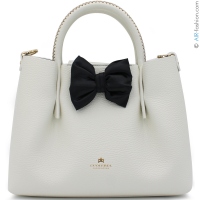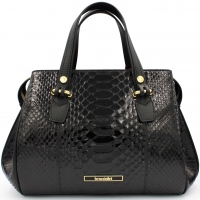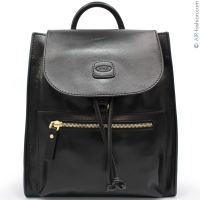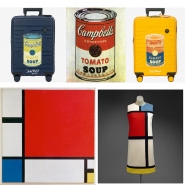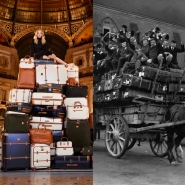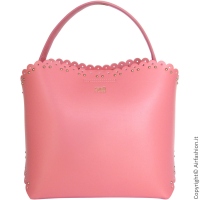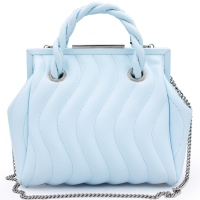In our fashion blog, we've long been researching the history of bags, their origins, and the developments in design and construction they've undergone over time. This time, I'll go back 2,000 years, precisely to the period of the ancient Roman Empire. Thanks to scientists and archaeologists around the world, humanity is gradually gathering new knowledge about the past and the objects our ancestors used in everyday life.
Among the prototypes of the modern bag was an arm purse used by the ancient Romans, dating back to 50 to 250 AD. The shape of this accessory resembled a bracelet with an internal cavity, it was made of bronze, and secured to the arm with an elastic strap. Roman legionaries wore this mini-bag on the left forearm, leaving their right arm free for combat.

Such purse could hold up to 50 denarii (Roman silver coins, which, when converted into today's currency, had the following nominal value: 1 Roman denarius equals approximately 30-50 euros). Incidentally, a simple Roman legionary, at the time this armband was invented, received 225 to 300 denarii per year. By today's standards, this is a rather modest salary.
Archaeologists rarely find such objects. Therefore, it can be assumed that these purses were worn only by persons of rather high rank. Among the military, these could have been officers or administrators of the legionary treasury.
One such accessory was recently discovered by archaeologists from the Czech Republic, found in the area of Hradisko Fortress in southern Moravia.
A fragment of a Roman arm purse, 30% preserved, discovered in January 2025, dates to the reign of Marcus Aurelius, 166–180 AD.
The mini-bag belonged to a Roman legionary who fought in the Marcomannic Wars (conflicts between the Roman Empire and several Germanic and Sarmatian tribes that took place between 166 and 180 AD along the Danube border).

The adjacent photo shows a restored replica of the wallet, as it would have appeared in its entirety (Author: Vaclav Šalek, Source: ČTK). Today, this fragment is on display at the Musov Centre in Pasohlávky, as part of the historical exhibition "Gateway to the Roman Empire."
A similar, intact wallet was found in England and is on display at the York Museum.

A similar Roman bronze wallet was found in the Netherlands. It dates back to approximately 1950-1800 years ago.

Does a similar bag model exist today? Yes, this ancient Roman invention was revived thanks to French artist and designer Amalia Mattaor. In 2010, she created her line of "Dance Bags." Her idea was to create a bag that could store various essentials, so that it could be possible always have them and yet keep the hands free during a party or ceremony.


The bags are made of leather (also exotic animal leather) and decorated with high-quality jewelry. Like their ancient Roman counterparts, they are worn on the forearm and secured with a leather elastic band. And, as in the Ancient Roman Empire, these bags today are a luxury item.





 Online Shop
Online Shop
 Terms and Conditions
Terms and Conditions
 Payments
Payments
 Feedback
Feedback
 Customer Support and Contacts
Customer Support and Contacts
 Discounts
Discounts
 Worldwide customs duties
Worldwide customs duties


 English
English
 Русский
Русский
 Deutsch
Deutsch
 Español
Español
 Français
Français

 +39
+39 info@air-fashion.com
info@air-fashion.com  Enter
Enter

